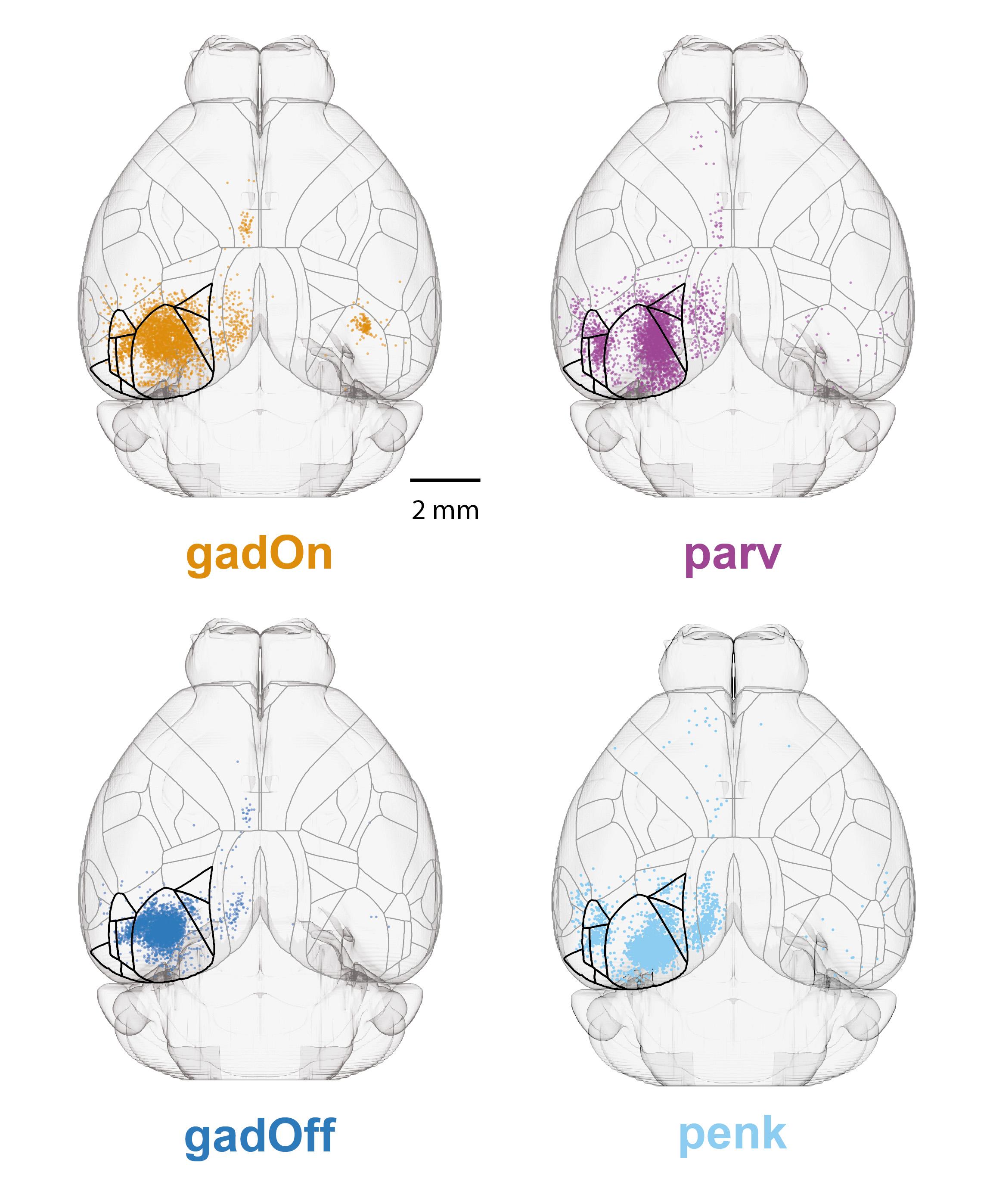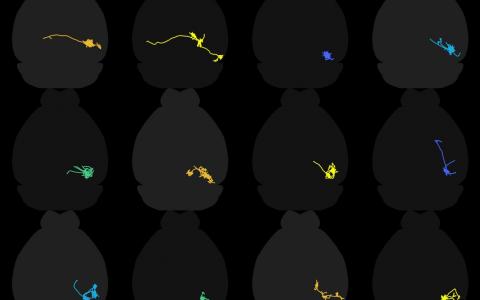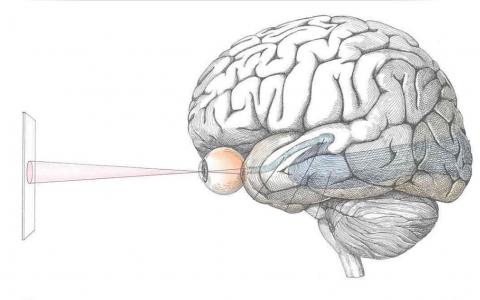
Unravelling long-range connections in the brain
By April Cashin-Garbutt
If you’d asked a neuroscientist 30 years ago – what does the visual cortex do? – the answer would have been it processes information from the eyes. But we now know it’s not that simple. There’s a huge amount of evidence that the visual cortex also integrates non-visual signals such as auditory information. The visual cortex does not just process information from lower regions of the brain and pass it to higher regions; instead it is connected with areas in many parts of the brain.
Understanding these long-range connections is really important, but it is also extremely challenging. While local connections in the brain have been studied extensively, long-range connections haven’t been studied as much. This is mostly because of the difficulty in identifying connections that are such a long distance away in the brain.
Investigating long-range connections in excitatory and inhibitory neurons
In a new Scientific Reports paper, Alexander Brown, Lee Cossell and colleagues in the Margrie lab outline a powerful new technique they developed to analyse patterns of inputs across the brain in mice. Using this new technique, they targeted the two major types of neurons in the cortex, excitatory and inhibitory cells, and investigated whether they have different patterns of long-range connections.
Surprisingly, the SWC researchers found that the long-range connections were very similar in excitatory and inhibitory cells. This was unexpected as the short-range connectivity of excitatory and inhibitory cells is quite different and so we’d expect the long-range connections to also be dissimilar.
At a local level, excitatory neurons connect more often to other excitatory neurons with similar properties. For example, a neuron that’s interested in horizontally-moving objects will be more likely to have a connection to another neuron interested in horizontally-moving objects. In contrast, inhibitory cells are less choosy – they connect to more neurons around them and are less specific.
Validating the new technique
Given the surprising similarity between long-range connections in excitatory and inhibitory cells, it was important for the team to validate the new technique. As their initial experiment had only focused on a single layer of the cortex, layer 2/3, they compared excitatory neurons in layer 2/3 with layer 6 of the cortex to confirm that the technique could find a difference where one was known to exist.
In the comparison between layer 2/3 and layer 6, the technique did find a difference in long-range connectivity. This validation confirmed their findings that there isn’t much of a difference within a layer between excitatory and inhibitory neurons in terms of long-range connections.

Exploring long-range connections in other parts of the brain
While this research elucidated long-range inputs into layer 2/3 of visual cortex in mice, the hope is that this new analytical technique will enable researchers to explore broader questions in other parts of the brain and at different levels of granularity.
Just as the world can be broken up into countries, cities and streets, so too can the brain. We can look at big areas of the brain like cortex, or finer grained areas like visual cortex. Within those areas, we can delve deeper to look at individual layers and regions, such as primary visual cortex. The question is – what is the correct level of analysis when looking at inputs? Should we look at the city level or the street level?
For a cell in the visual cortex, we could ask how much of its input is from cortex or brain stem? Or we could ask how much of its input is from auditory cortex or motor cortex? Up until now, there has been no logical way to do one or the other. Instead, researchers choose whether to agglomerate the sub-regions into super-regions for their analysis.
The new technique that Brown et al. developed provides a hierarchical analysis approach which enables the brain to be broken down into the finest reliable level for meaningful answers to questions. The approach takes the set of cells that have been labelled across the entire brain and first looks at the highest possible breakdown of regions, the equivalent of the countries view of the world. Then it looks within that breakdown to see if there are enough cells to do an analysis of sub-regions and if there are, it breaks it down again. Then it looks at the finer grained sub-regions and asks if there are enough cells left to do an analysis and breaks down another time until it reaches the point where there are not enough cells to break down any further.
Rather than researchers arbitrarily deciding beforehand what level of analysis they are going to do, instead the technique gives the most appropriate level of analysis and also provides a single number that quantifies how different two patterns of inputs are. The hope is that this new approach will be extremely useful for future experiments that tackle more general questions about inputs in the brain. By statistically analysing distributions of cells across the brain, the technique will help researchers unravel the long-range connections in the brain and answer these general questions in a meaningful way.
Read the paper in Scientific Reports: Analysis of segmentation ontology reveals the similarities and differences in connectivity onto L2/3 neurons in mouse V1

